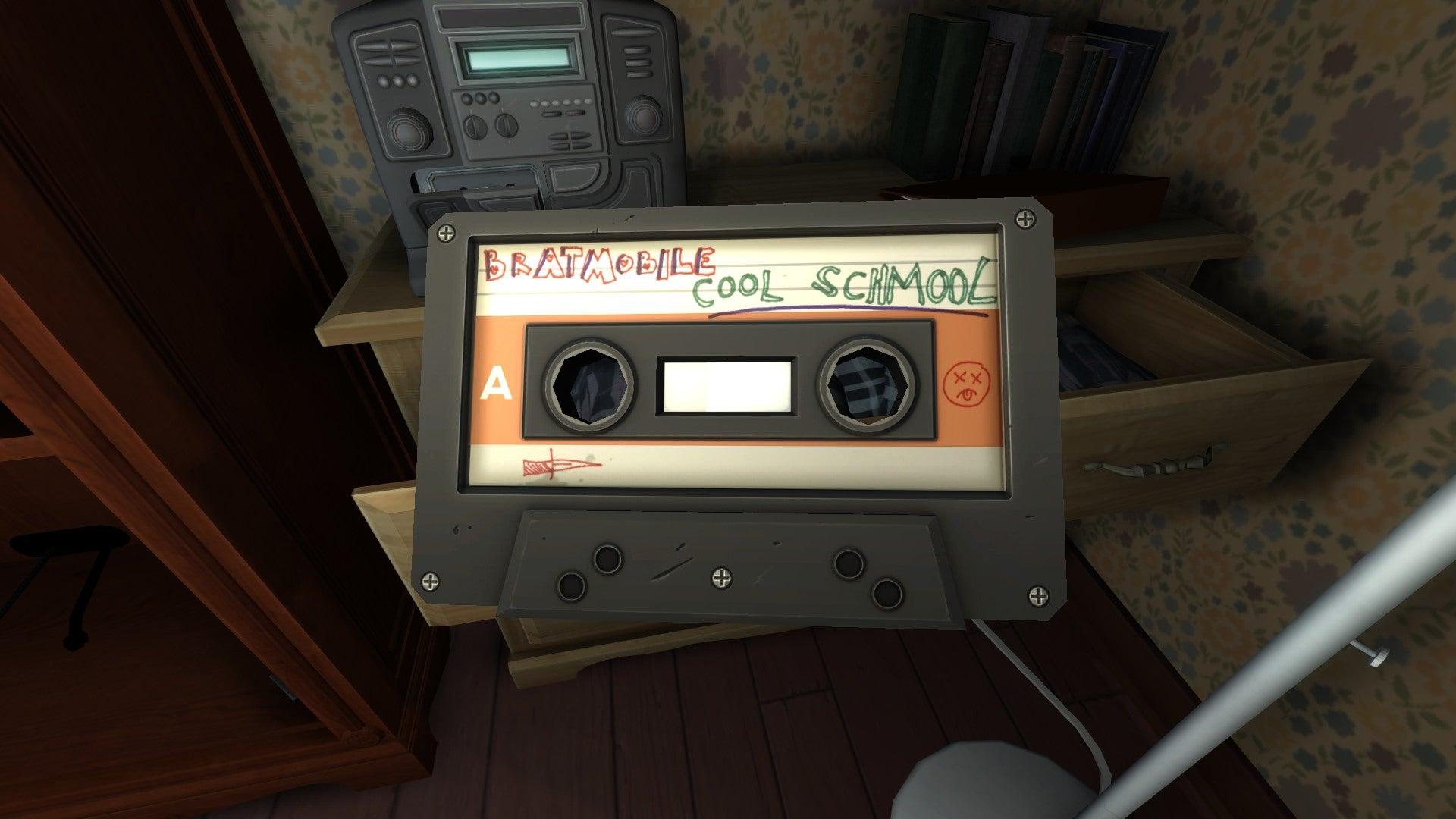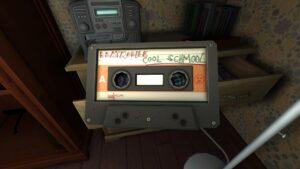Gone Home, a mystery game created by Steve Gaynor of Fullbright Company, stood out to me not just for its innovative storytelling but its immersive use of sound. As someone who hopes to become a music composer for film and video games, I always appreciate when a game does sound really well and I thought Gone Home’s sound design was very intentional and effective in immersing the player into Katie’s world. Set in an abandoned house, the game has players unraveling a family’s story through exploration and interaction. I claim that the sound and music in Gone Home is not merely a background element but a critical narrative tool that significantly enhances the storytelling. This use of realistic sound and unsettling score transforms the gameplay into a compelling and immersive experience, emotionally engaging the player in the unfolding family mystery.
The creaking floorboard, rain sounds, and door opening sounds among other foley sounds contribute to a soundscape that is both eerie and authentic. Aligned with the gameplay interactions, they reinforce the sense of discovery and exploration.
But more importantly, the voice overs are what really “sold” the game for me. They are the emotional core of the game. The recordings are triggered by player interactions with specific objects around the house such as a note on a desk. The use of diegetic sound allows players to hear voices of artifacts in the contexts that they were recorded in, creating a very powerful and personal connection to the character. The voiceovers play a crucial part in inviting players into the character’s lives and make the struggles and revelations deeply impactful. Below is an example of an object that incites the audio recordings.
The house’s layout encourages a linear exploration, where the narrative gets deeper as the plate movies through the space. Each room in the house is curated to tell a part of the family story. The main living areas are filled with everyday objects and photographs which introduce characters and their dynamics. As players venture into more private spaces like bedrooms, they find more specific details like personal letters or diary entries.
In terms of loops and arcs, the primary loop is the recurring task of picking up objects, examining them, and placing them back. It’s very simple and effective. It provides continuous feedback through narrative snippets. The loops are usually a part of a large narrative arc – the stories of family members. Each arc is constructed through a series of loops, collecting and interacting with specific sets of objects that progress the story.
Compared to other games that have complex puzzle loops or combat loops, Gone Home, simplifies the interaction but deepens the narrative connection. While other loops are engaging, they often place more emphasis on player skills and less on storytelling. In contrast, Gone Home, places the entirety of the player focus on the narrative itself. It doesn’t challenge the player’s reflexes or puzzle-solving skills, but their attention to detail and emotional engagement. It’s because of this type of loop that allows sound to play a larger role in the game than most. (The game is based on story, and the music and sound is largely a storytelling element).
The strength of this game to me are the thoughtful sound design and simplistic mechanics. It’s clever and demonstrates the power of sound, realism, and simplicity in storytelling.





